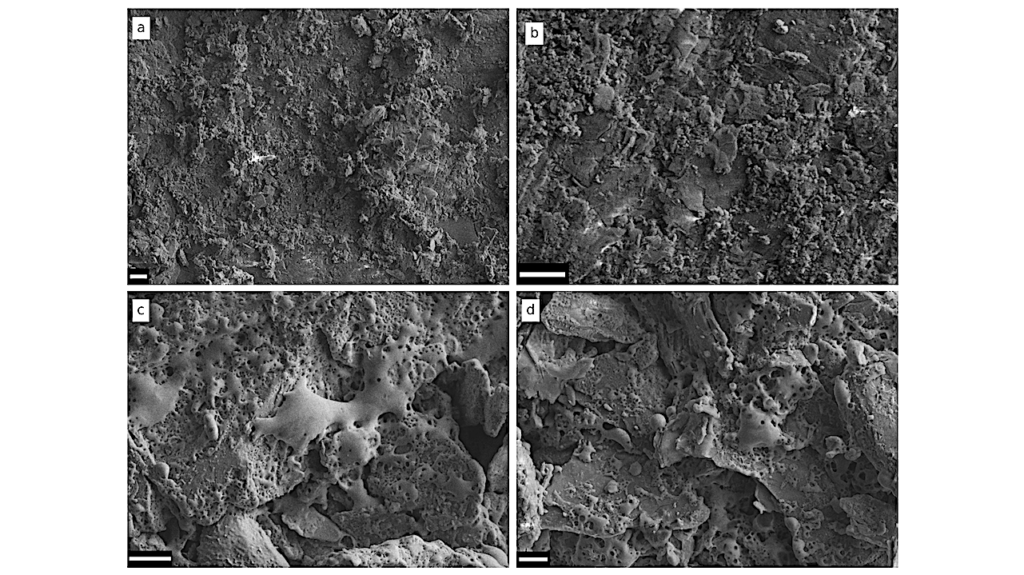Separate Silicate And Carbonaceous Solids Formed From Mixed Atomic And Molecular Species Diffusing In Neon Ice

The formation and growth of refractory matter on pre-existing interstellar dust grain surfaces was studied experimentally by annealing neon-ice matrices in which potential precursors of silicate grains (Mg and Fe atoms, SiO and SiO2 molecules) and of solid carbon (Cn molecules, n = 2-10) were initially isolated.
Other molecules, mainly O3, CO, CO2, C3O, and H2O, were embedded at the same time in the matrices. The annealing procedure caused the cold dopants to diffuse and interact in the neon ice. Monitoring the procedure in situ with infrared spectroscopy revealed the disappearance of the silicon oxide and carbon molecules at temperatures lower than 13 K, and the rise of the Si-O stretching band of silicates. Ex situ electron microscopy confirmed the formation of silicate grains and showed that their structure was amorphous.
It also showed that amorphous carbon matter was formed simultaneously next to the silicate grains, the two materials being chemically separated. The results of the experiments support the hypothesis that grains of complex silicates and of carbonaceous materials are re-formed in the cold ISM, as suggested by astronomical observations and evolution models of cosmic dust masses. Moreover, they show that the potential precursors of one material do not combine with those of the other at cryogenic temperatures, providing us with a clue as to the separation of silicates and carbon in interstellar grains.
Gaël Rouillé (1 and 2), Cornelia Jäger (1 and 2), Thomas Henning (1) ((1) Friedrich-Schiller-Universität Jena, (2) Max Planck Institute for Astronomy)
(Submitted on 25 Feb 2020)
Comments: 20 pages, 9 figures, accepted for publication in The Astrophysical Journal
Subjects: Astrophysics of Galaxies (astro-ph.GA); Materials Science (cond-mat.mtrl-sci)
Cite as: arXiv:2002.10728 [astro-ph.GA] (or arXiv:2002.10728v1 [astro-ph.GA] for this version)
Submission history
From: Gaël Rouillé
[v1] Tue, 25 Feb 2020 08:29:49 UTC (8,108 KB)
https://arxiv.org/abs/2002.10728
Astrobiology, Astrochemistry








